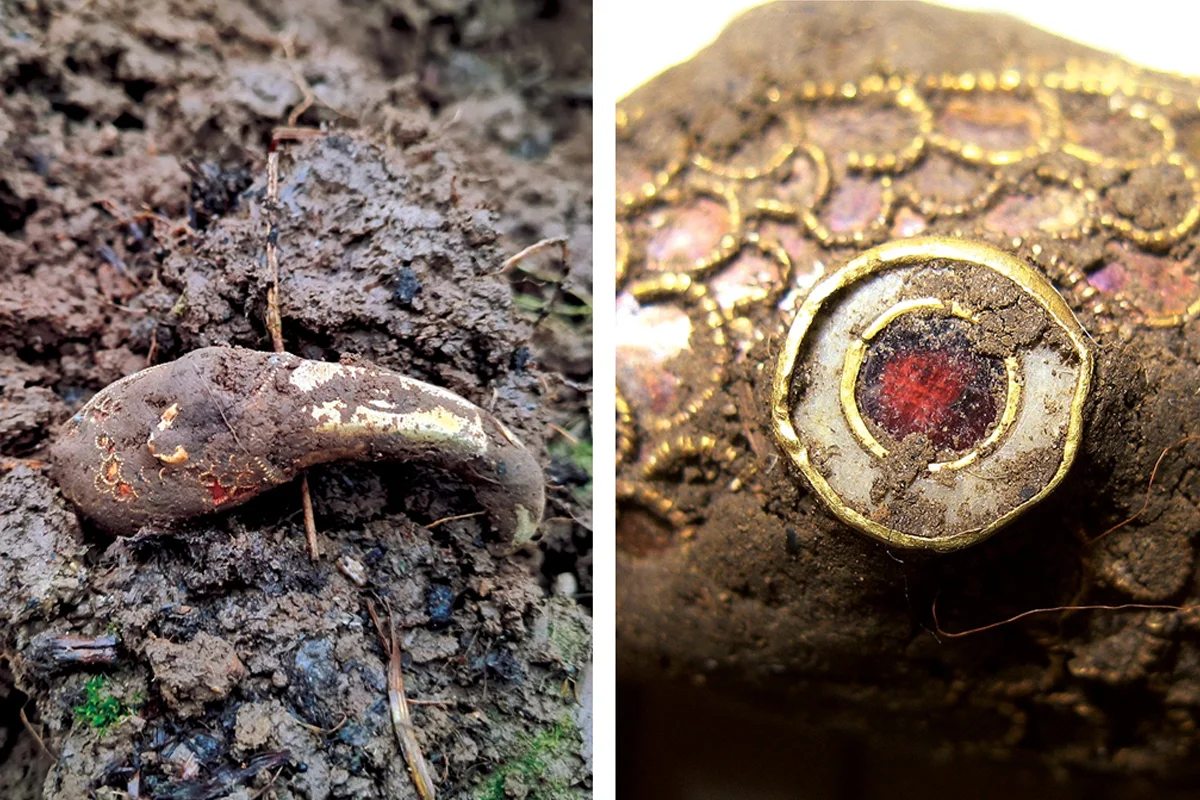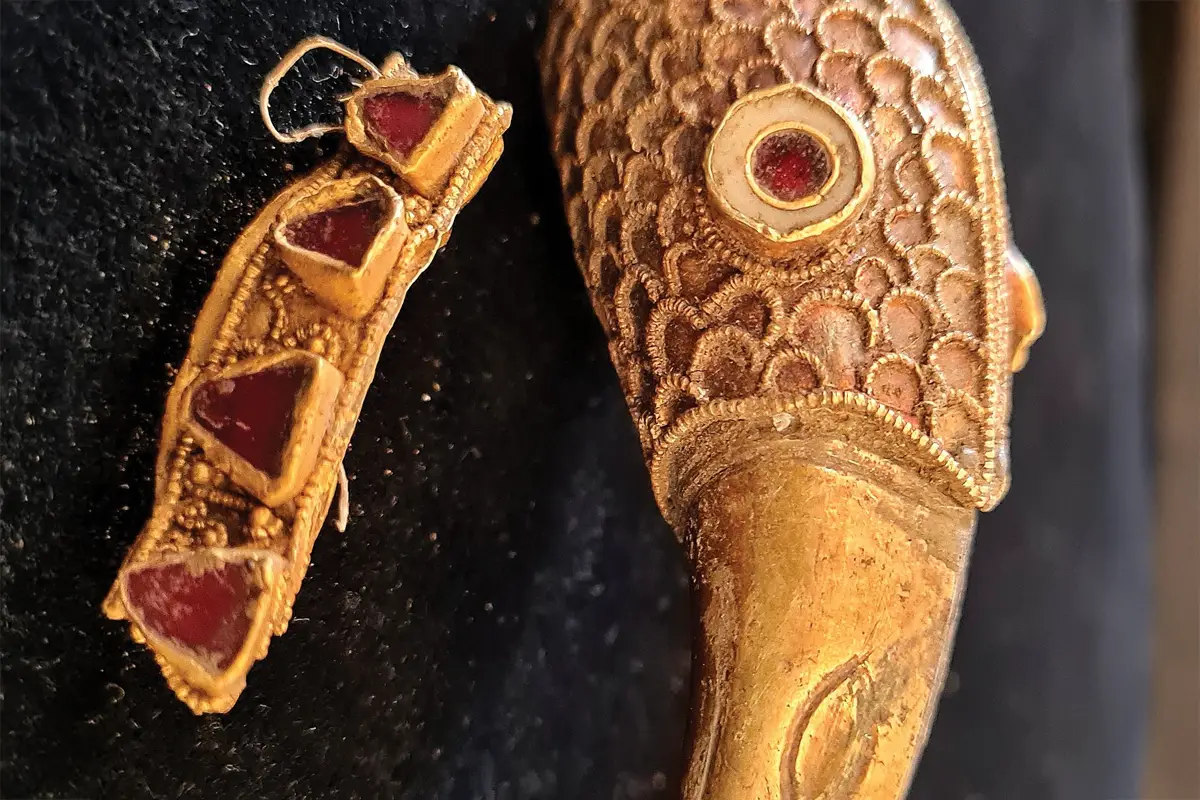Almost like an episode from the BBC comedy series Detectorists, a pair of metal detectorists have uncovered an Anglo-Saxon hoard in the southwest of England – a discovery described as nationally significant.
The initial find was made by Paul Gould during a rally organised by the 9th Region Metal Detecting Group in West Wiltshire. After a largely uneventful day, Mr Gould was heading back to his car when he picked up a strong signal, unearthing what appeared to be a flattened ring object.
Upon closer inspection, it was revealed to be gold with inlaid garnets, a gemstone widely used in Anglo Saxon jewellery mainly from the 6th to 8th centuries AD.
A short distance from the find spot, a second discovery was made by Christopher Philips: a decorative raven’s head crafted from gold, with eyes also inlaid with garnets. The piece features intricate filigree detailing across the head, and the beak includes finely worked features to indicate the bird’s nostrils.

Ravens are described in Anglo-Saxon and Norse poetry as harbingers of impending slaughter and fate, often shown feeding on the dead and reinforcing their powerful association with the brutal realities of war.
Although exceptionally rare in Anglo-Saxon jewellery, certain bird-like pieces from the Sutton Hoo and Staffordshire Hoard feature garnet-inlaid eyes and distinctive beak shapes that may have symbolic references to ravens.
With the proximity and similarities between the rally finds indicating a hoard, the organisers immediately halted any further detecting activity in the area and notified the finds liaison officer (FLO) for Wiltshire.
Both objects have been sent for assessment, with initial interpretations suggesting that they could be from a drinking vessel or helmet fitting with Anglo/Scandinavian origins.
Header Image Credit : Searcher FB Page
Sources : Searcher







